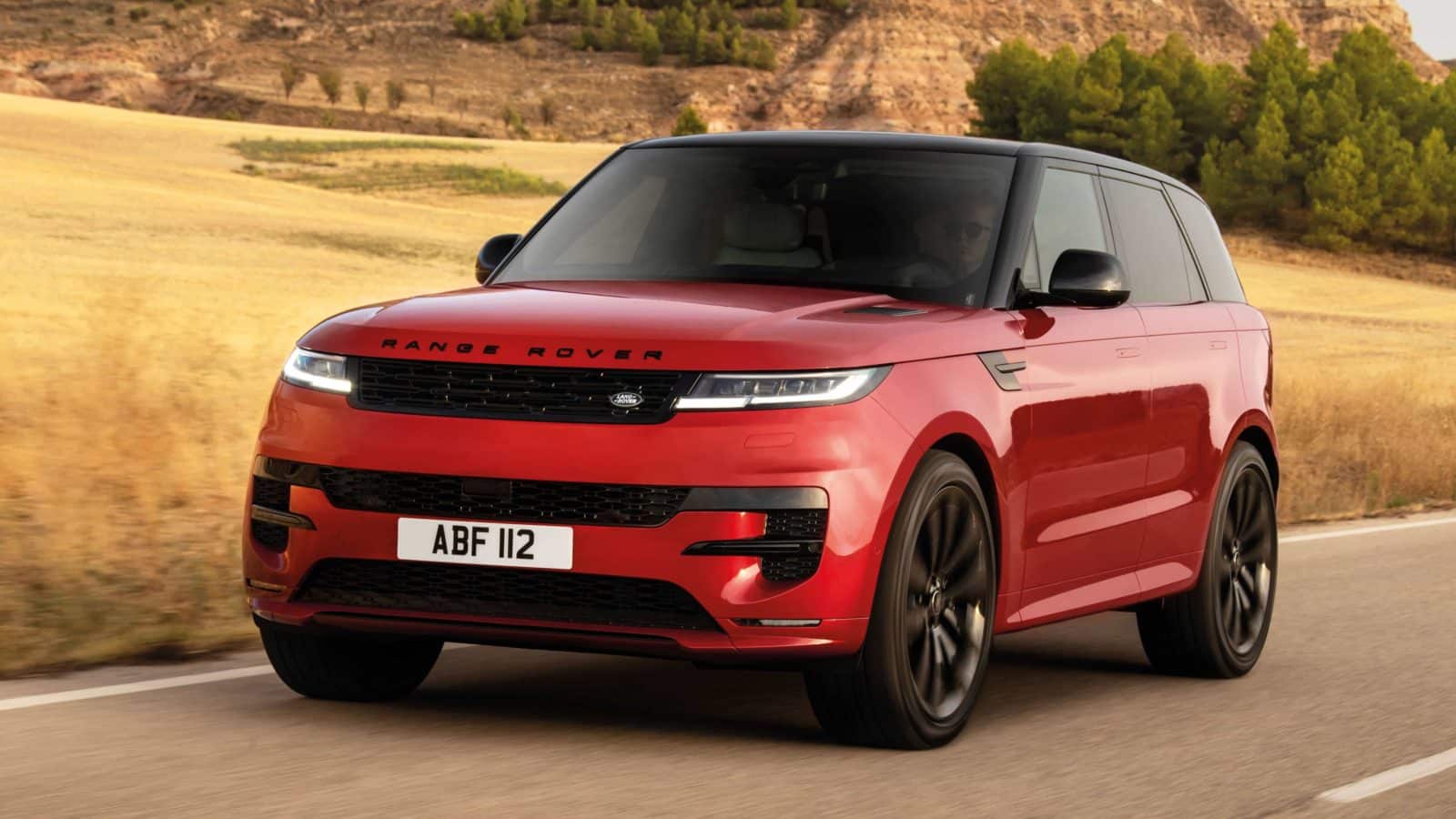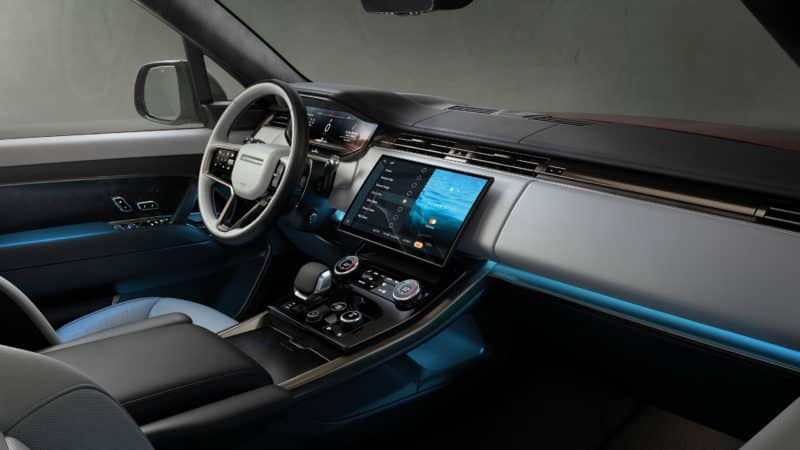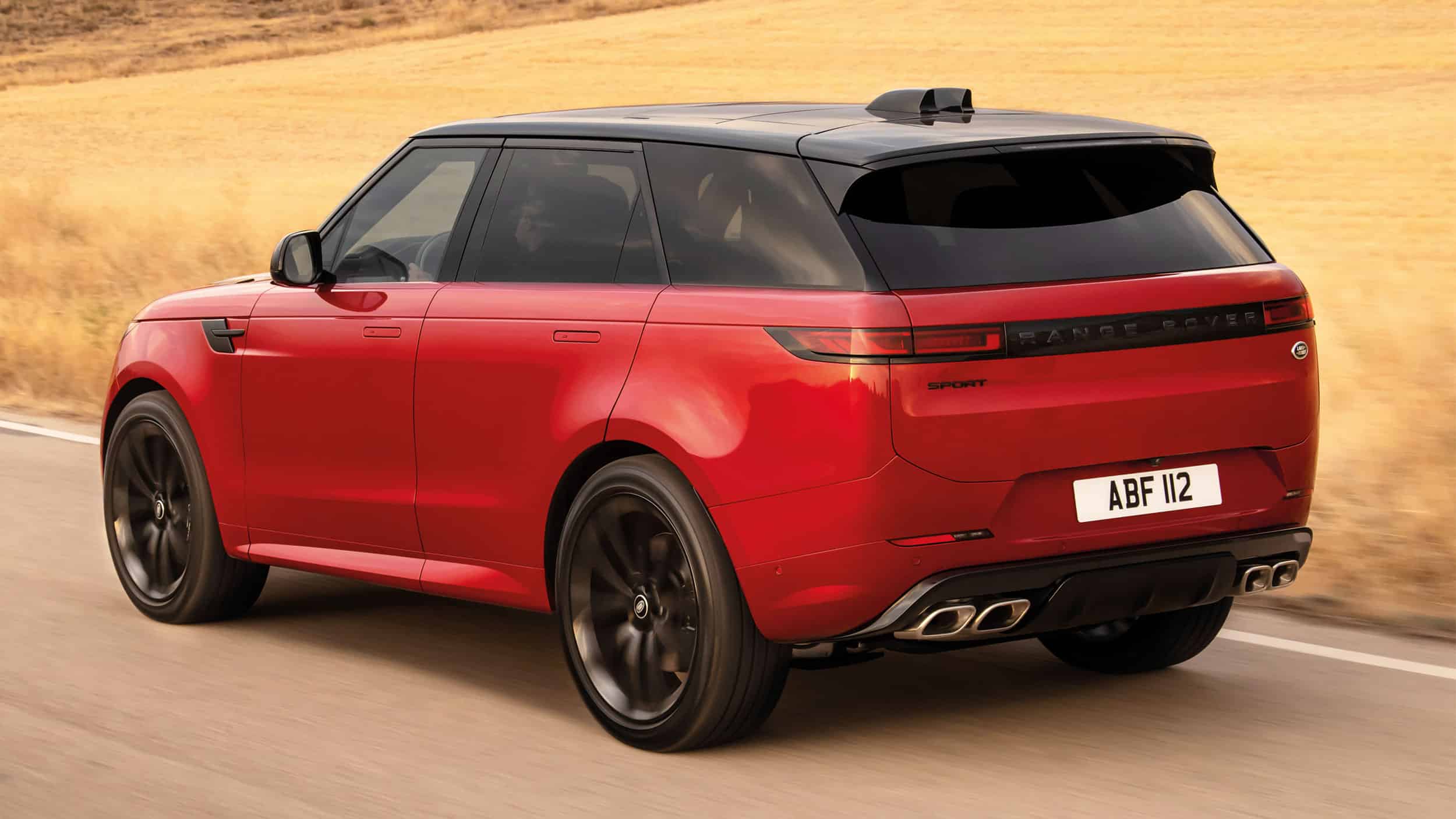2022 Range Rover Sport review: Britannia rules the SUVs
Although the Sport moniker is misleading, Andrew Frankel’s pulse is quickening with the expensive new Range Rover diesel

New LED lights and a re-shaped grille are part of an unfussy overall look – in contrast to the wild lines of BMW
Which is Land Rover’s most important car? Well you could argue it’s the Range Rover because it is the big brand builder, or the Discovery Sport because it sells in the highest volumes. But no: now, and as it has been for over 17 years, Land Rover’s most important car is the Range Rover Sport, because selling in volume at high margins, it brings in all the money.
For a large swathe of that time, it was also Land Rover’s worst car. The original Range Rover Sport was a re-clothed Discovery 3, complete with its immensely heavy semi-monocque chassis, meaning that while it had off-road ability no one needed, it lacked the sporting feel suggested for it. It also looked awkward. None of which stopped it excelling itself in the showroom and fast becoming a staple of the Land Rover line-up.
Today’s third generation car is a very different beast. Yes, it shares its platform with another, but this time the flagship Range Rover. It’s shorter than a Rangie and considerably lower, but it shares the same wheelbase as the standard Range Rover and also the same hybrid aluminium/steel monocoque construction.
It is also eye-wateringly expensive. This flagship diesel model retails for a couple of options less than £100,000, while the car in the same position in the range in 2005 cost £44,000, less than £70,000 in today’s terms. For as the Range Rover has been pushed relentlessly upmarket towards the rarefied air where lie Bentley and Aston SUV, so has the Sport been dragged along in its wake.
But it is very, very good. I don’t think it looks quite as nice as the Range Rover, but when you climb aboard and survey a minimalist cabin of quite exceptional perceived quality – it doesn’t feel quite as good as it looks but it’s pretty close – it’s hard not be suffused with an immediate sense of well-being.
“When you shut the door you feel sealed off from the world”
It does that curious thing, peculiar to big Range Rovers, that when you shut the door, you feel sealed off from the rest of the world, in a cocoon of peace and tranquillity with all the bad stuff out there, and that’s where it’s going to remain.
The 3-litre diesel motor hums quietly into life. I wondered then, as I do now, whether this will be that last press car delivered to me powered by diesel. It is entirely possible.
But as you ease out onto the roads, the straight six whirring away silently ahead of you, then feel its massive, mild-hybrid-assisted low down torque and sheer effortlessness of the way it bowls you down the road, you can’t help thinking that such cars will only be made worse by its demise. The massive range and fuel consumption in the mid-30s are considerable attractions as well.

Keep your hair on – the new Pivi Pro system is a vast improvement on InControl infotainment
Does it deserve that ‘Sport’ badge? Not really, but then what SUV ever really did? This car came with a £5330 ‘Stormer’ pack which provides four-wheel steering, active anti-roll bars and torque vectoring differentials to sharpen up the show and it works well, but it does not turn it into a sports car, nor even a particularly sporting one, and when a car is this high and heavy that is to be expected.
What you do notice, however, is how very well controlled is this car even when you start to push it about: its chassis movements are never excessive and it provides great confidence for such a hefty beast. And this is the real point: just because it’s not fun or sporting to drive, does not make it dull or unpleasant. On the contrary, in its precision and poise there is much to admire and enjoy.
Nor does the rest of it annoy any more. The previous generation Range Rover Sport had what Land Rover referred to as InControl infotainment which regularly left me struggling to control my own temper thanks to its cussed, unintuitive ways. And while I’m not saying the Pivi Pro system that’s replaced it sets the standard across the board, it’s fully competitive, an improvement of light year proportions and no longer a reason all by itself to not buy the car. But I’d still prefer bigger icons that are easier to stab without taking your eyes off the road.
Otherwise, this is a fine family hack. There’s plenty of space in the back, because between the wheels it’s the same size as a Range Rover. There’s storage aplenty and enough room in the boot for an extended family holiday. What you won’t find there are any additional seats. In their previous generations, you could get a seven-seat Range Rover Sport but not a seven-seat Range Rover – that’s now flipped about and while the Range Rover has three rows of seats so long as you choose the long-wheelbase model, the absence (for now) of a stretched Range Rover Sport precludes the possibility of carrying more than five.
Drive the Range Rover Sport and it is hard not to conclude it’s more evidence of a company at the top of its game. I preferred the Range Rover because it doesn’t try to pretend it’s something it can never be – a sporting car – but for those who can’t afford a car whose prices begin where the Sport’s stop – and who can survive without the additional seats and prestige of the flagship model, the Sport makes an admirable, more affordable if still pricey alternative.

Range Rover Sport D350 Autobiography
• Price £97,770
• Engine 3 litres, six cylinders, diesel
• Power 346bhp at 4000rpm
• Torque 516lb ft at 1500rpm
• Weight 2360kg (DIN)
• Power to weight 147bhp per tonne
• Transmission Eight-speed automatic, four-wheel drive
• 0-60mph 5.9sec
• Top speed 145mph
• Economy 36.7mpg
• CO2 202g/km
• Verdict Controlled and confident.

